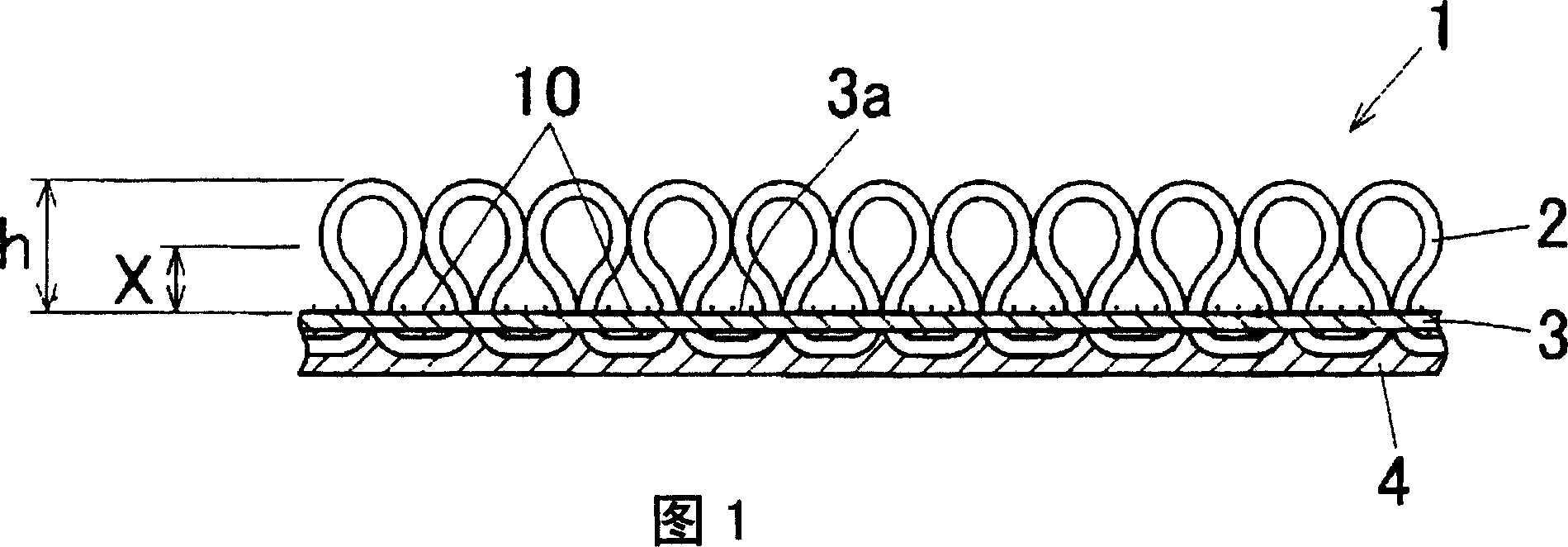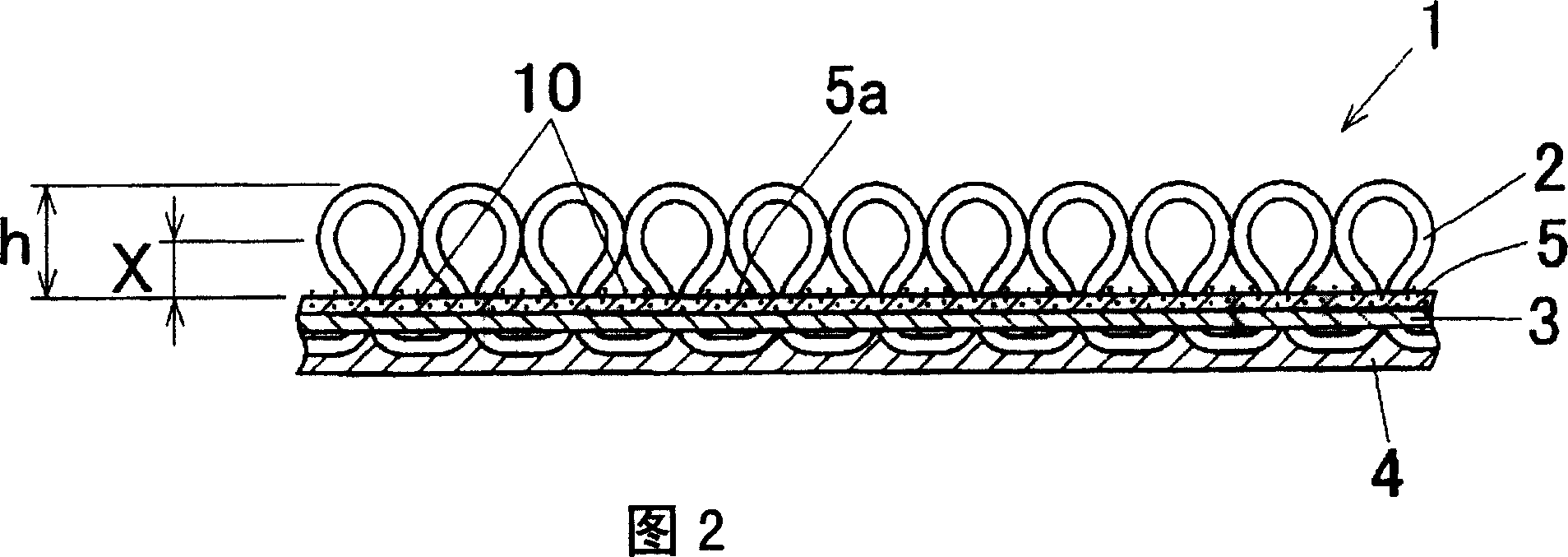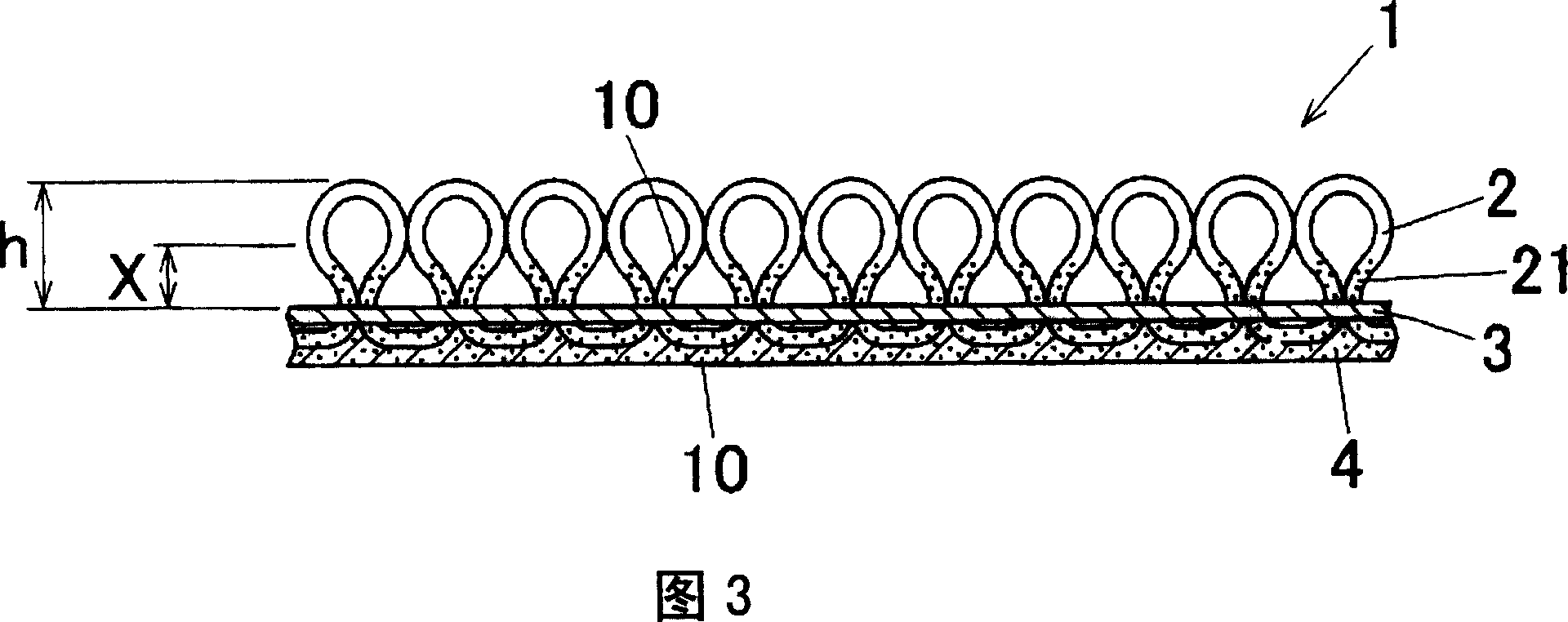Carpet and process for producing the same
A technology of carpets and piles, applied in carpets, etc., can solve the problems of difficult to achieve allergic diseases, inactivation of allergens, non-existence, etc., and achieve the effect of preventing the living environment induced by allergic diseases and reducing the amount of allergens
- Summary
- Abstract
- Description
- Claims
- Application Information
AI Technical Summary
Problems solved by technology
Method used
Image
Examples
Embodiment 1
[0071] In 100 parts by mass of water, 50 parts by mass of tyrosine (allergen reducing agent) was dispersed, and 50 parts by mass of EVA resin was further dispersed to obtain an aqueous dispersion. Adopt this aqueous dispersion liquid to be coated on base cloth (by the flat silk woven cloth that polypropylene fiber is made of by spraying method, order pays 110g / m2) 2 ), and then dried at 110° C. for 3 minutes to obtain a base fabric with the allergen reducing agent adhered to one side of the base fabric. At this time, the adhesion amount of the allergen reducing agent is 7g / m 2 . Then, use a tufting machine to plant pile yarns made of polyester fibers from the other side of the base fabric (the side to which the allergen reducing agent is not attached) (the pile yarn is 700 g / m 2 ), thereby forming a cut pile with a pile length of 7 mm on the side to which the allergen reducing agent is attached, thereby obtaining a gray carpet fabric. Then, SBR latex (containing calcium car...
Embodiment 2
[0073] Except that the adhesion amount of the allergen reducing agent on the upper surface of the base fabric is 10g / m 2 Except that, similarly to Example 1, the carpet which consists of the structure shown in FIG. 1 was obtained.
Embodiment 3
[0075] In addition to making the adhesion amount of the allergen reducing agent on the upper surface of the base fabric 1.2g / m2 2 Except that, similarly to Example 1, the carpet which consists of the structure shown in FIG. 1 was obtained.
PUM
 Login to View More
Login to View More Abstract
Description
Claims
Application Information
 Login to View More
Login to View More - R&D
- Intellectual Property
- Life Sciences
- Materials
- Tech Scout
- Unparalleled Data Quality
- Higher Quality Content
- 60% Fewer Hallucinations
Browse by: Latest US Patents, China's latest patents, Technical Efficacy Thesaurus, Application Domain, Technology Topic, Popular Technical Reports.
© 2025 PatSnap. All rights reserved.Legal|Privacy policy|Modern Slavery Act Transparency Statement|Sitemap|About US| Contact US: help@patsnap.com



